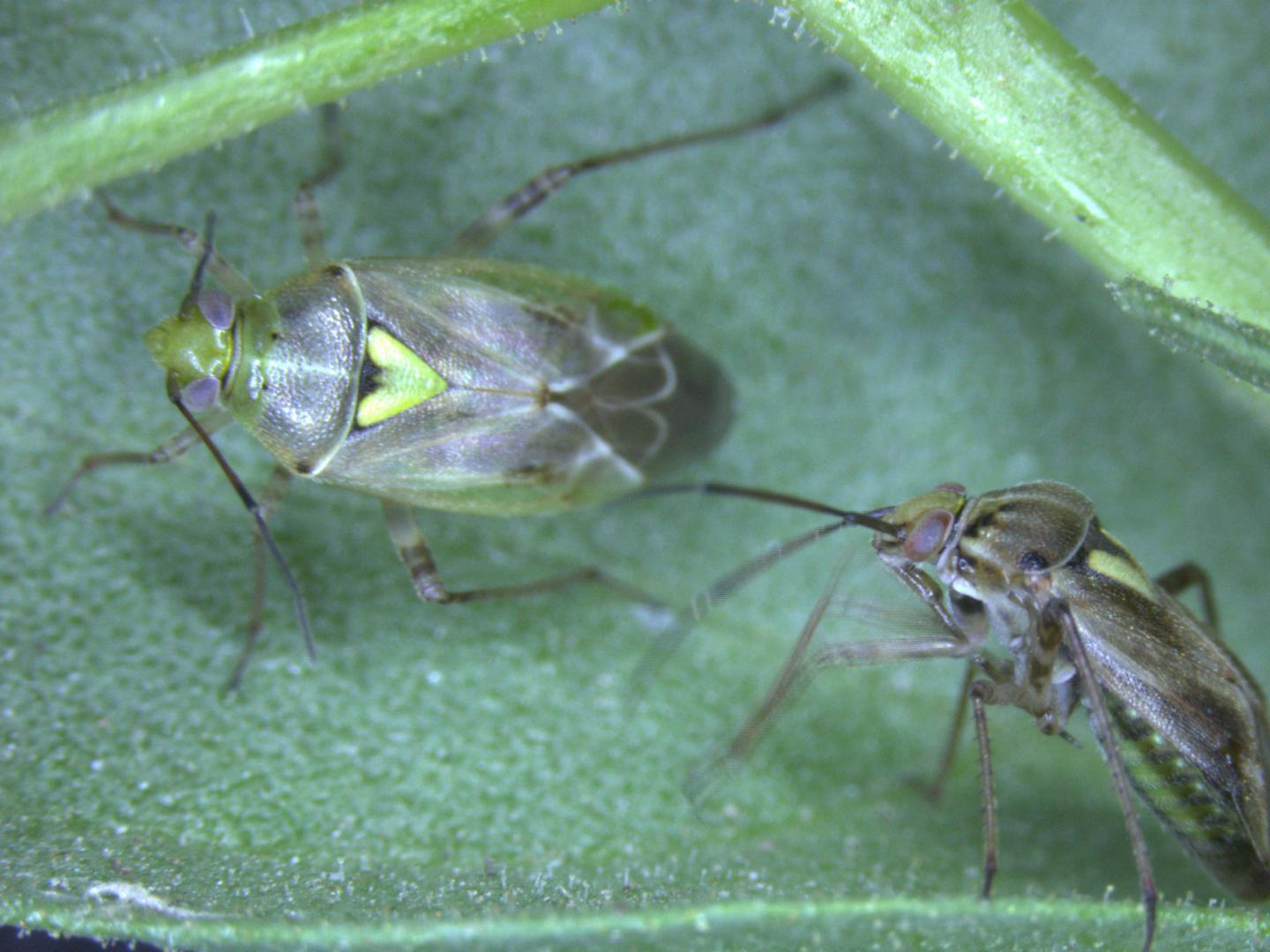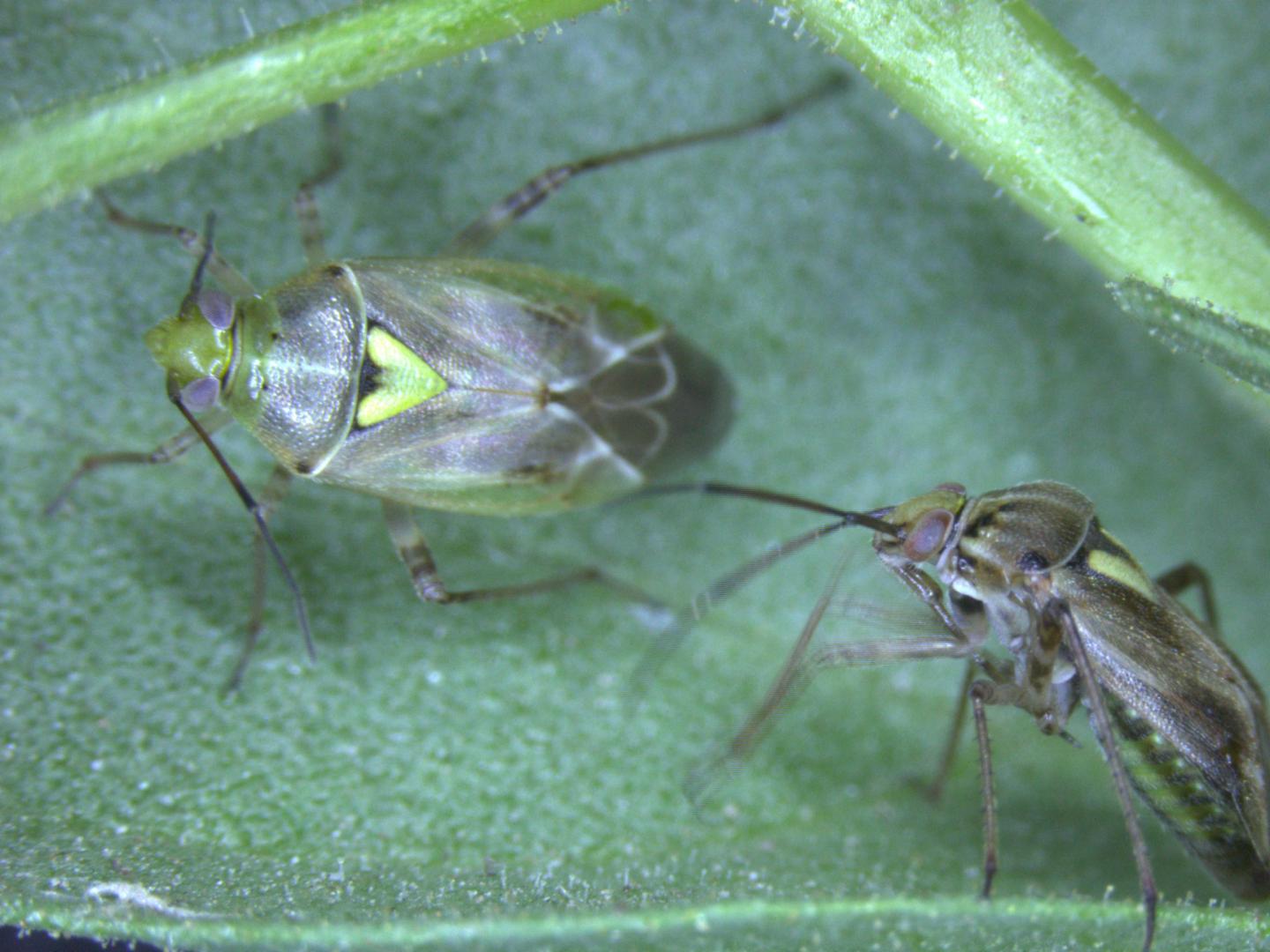
Credit: Brent et al., 2017
Researchers have identified a pheromone released by female insects after mating that tells males exactly when they are ready to mate again.
The pheromone, discovered in the western tarnished plant bug Lygus hesperus (L. hesperus), reverses the effects of an antiaphrodisiac found in the male's semen, which stops them from harassing females during the egg-laying period after copulation.
This so-called 'anti-antiaphrodisiac', described in the journal eLife, adds a new level to the complex communication mechanisms already identified in insect reproduction. Fully understanding these mechanisms could help inform novel control strategies for L. hesperus, a major agricultural pest insect known for its destructive feeding habits.
In many animal species, males guard females to prevent rivals from mating so they can be sure to father the offspring. Such mate guarding can be more passive than active, and can persist even when the male is absent. For example, some male insects transfer an antiaphrodisiac along with their sperm, the smell of which repels other males from inseminated females.
Previous studies have shown that on the first day of mating, L. hesperus females are less likely to be courted by a male than virgin females due to the effect of a seminal antiaphrodisiac. "However, this effect only persists for a few days," says Research Entomologist Colin Brent from the US Department of Agriculture's Agricultural Research Service, who led the current study. "Over time, those females regain their attractiveness so that, by five days after mating, they are as likely to be courted as virgins. But the mechanism by which this is accomplished has not been determined."
To discover this, Brent and his colleagues – John Byers from the Hebrew University of Jerusalem and Anat Levi-Zada from the Agricultural Research Organization, Volcani Center, Israel – tested odourants emitted from mated L. hesperus females. Using a technique called gas chromatography mass spectrometry, coupled with behavioural tests, they identified three compounds in the male accessory glands and in capsules containing sperm that were taken from females at various stages after mating.
"Our analyses confirmed the presence of a previously identified antiaphrodisiac called myristyl acetate, and revealed two additional compounds that repel other males from recently mated females," Brent explains. "The female converts one of these internally before releasing it as a third compound, which counteracts the antiaphrodisiac effect caused by the myristyl acetate but does not actually increase male attraction to the female."
Brent adds that although this is the first recorded instance of an anti-antiaphrodisiac, such compounds may not be rare – they may have simply been overlooked until now.
"While male Lygus bugs have evolved a chemical mate-guarding mechanism, female evolution favoured a counter mechanism, providing males with an accurate indication of when they are ready to mate again following their egg-laying activity," he says.
"Given the advantages of this two-dimensional chemical signalling system, other examples of anti-antiaphrodisiacs are likely be found. These systems could then be manipulated and turned against the pests, causing them to change their behaviours in a way that could help reduce their population."
###
Reference
The paper 'An insect anti-antiaphrodisiac' can be freely accessed online at https://doi.org/10.7554/eLife.24063. Contents, including text, figures and data, are free to reuse under a CC BY 4.0 license.
Media contact
Emily Packer, eLife
[email protected]
01223 855373
About eLife
eLife is a unique collaboration between the funders and practitioners of research to improve the way important research is selected, presented and shared. eLife publishes outstanding works across the life sciences and biomedicine – from basic biological research to applied, translational and clinical studies. All papers are selected by active scientists in the research community. Decisions and responses are agreed by the reviewers and consolidated by the Reviewing Editor into a single, clear set of instructions for authors, removing the need for laborious cycles of revision and allowing authors to publish their findings quickly. eLife is supported by the Howard Hughes Medical Institute, the Max Planck Society and the Wellcome Trust. Learn more at elifesciences.org.
Media Contact
Emily Packer
[email protected]
01-223-855-373
@elife
http://www.elifesciences.org
Related Journal Article
http://dx.doi.org/10.7554/eLife.24063





